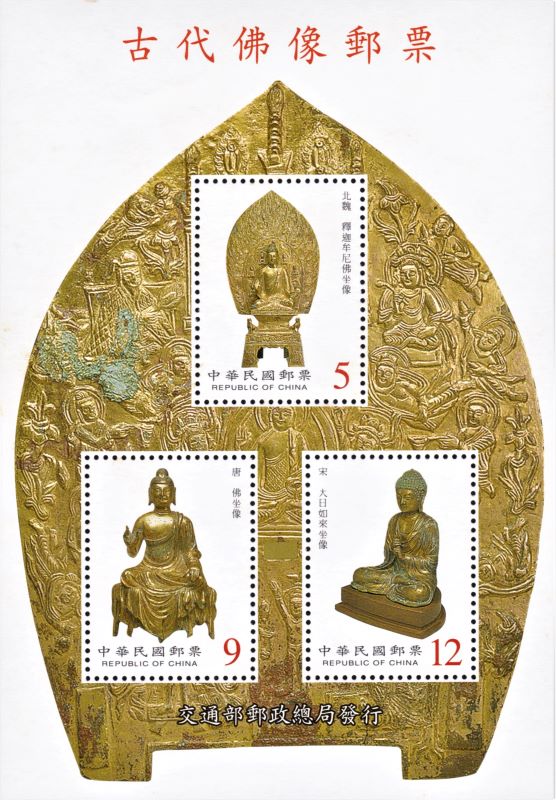| The Ancient Buddha Statue | |
To promote Chinese culture and introduce exquisite ancient Chinese art works to the world, the Directorate has taken the suggestion of the National Palace Museum to base a set of stamps and a souvenir sheet on the theme of ancient statues depicting seated Buddhas. The Republic of China is a country where the people enjoy religious freedom. All kinds of religions can be promoted and worshipped here. Buddhism, which is one of the major religions in our country, originated from India and entered China around 100 A.D.. The word "Buddha" means the enlightened one. Early Chinese Buddhist statues often look foreign, with long, thin faces and pronounced features. The Northern Wei Dynasty Sakyamuni Buddha Statue. The depicted figure has wavy hair that curls in big spirals and a long, oval face. He wears a cloak over a Buddhist robe that bares his right shoulder. His clothes fall and bunch in the shape of a flame. The statue is quite magnificent. A Tang Dynasty Seated Buddha China's Buddhist sects prospered during the Tang, and the Buddhist statues created represent the quintessence of Tang Dynasty artistry. This outstanding statue was crafted at the height of Tang Dynasty. Although the statue is not big, it is nevertheless very impressive. A Sung Dynasty Mahavairocana Buddha After the Sung Dynasty, Buddhism became a mass religion in China, and the Sung Dynasty Buddhist statue Mahavairocana Buddha shown here has a round and flat typically oriental face. The fold lines on his clothes are smooth, and he looks amiable and merciful.
|
|
| Issued Country | Taiwan (R.O.C) |
| Issued Year | 2001 |
| Category | Buddhist Image Buddhist Arts Theme 1: : World Buddhist Heritage Through Stamps |
| Type | Commemorative/Special Stamps |
WORLD BUDDHIST STAMPS e.GALLERY
bringing the buddhist world at the comfort of your home
